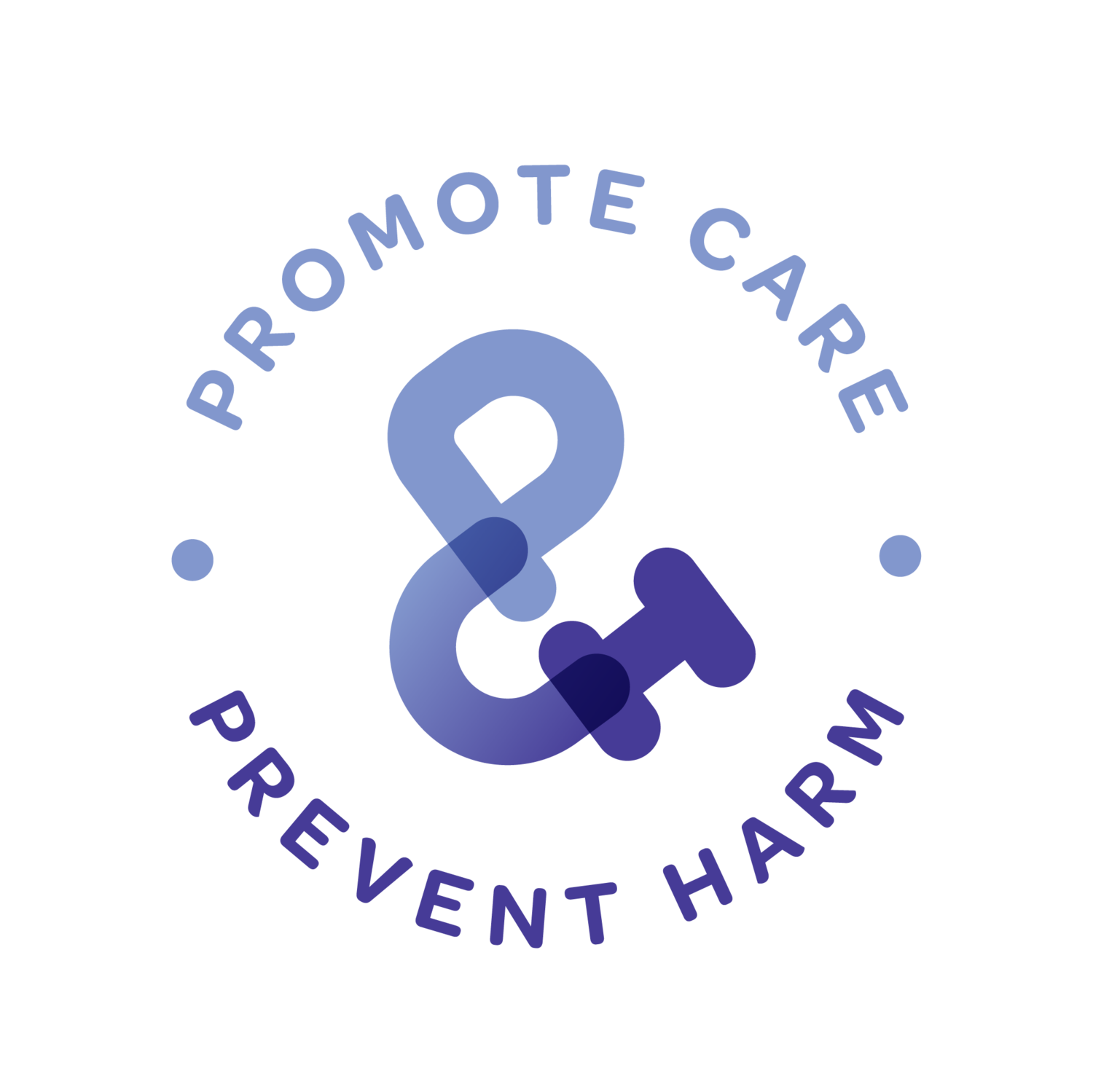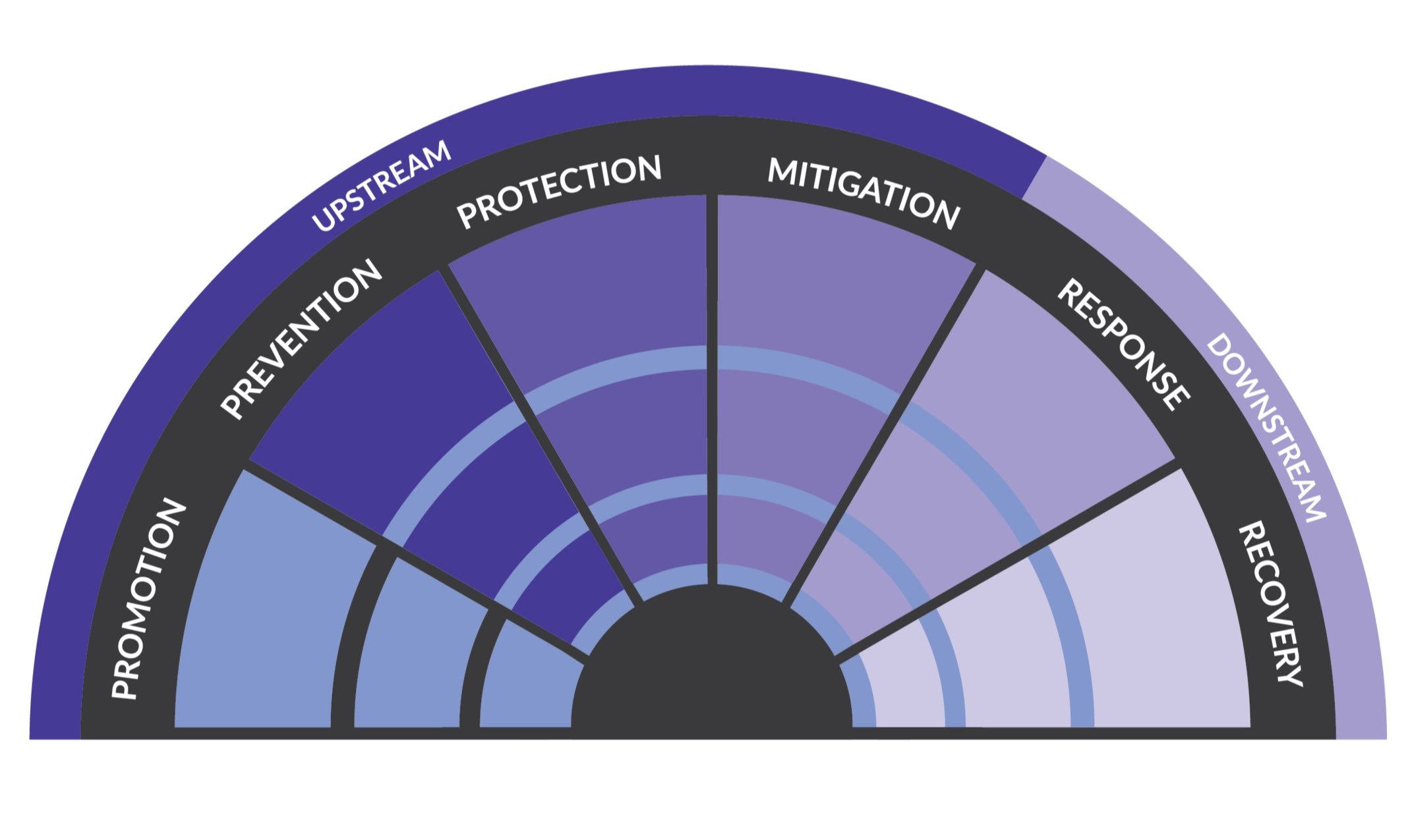Programs
Our youth programs support students as they create change in their high school (during or after school), on their college campus, and within their community (from a community-based organization or online).
Are you a student who wants to create change?
Our adult courses focus on school professionals and adult allies who support youth-led change. They learn how to build students’ strengths, assist youth as they navigate team collaboration issues, and provide youth with support and structure.
Are you an adult who supports youth leaders?
Our Programs Focus on Upstream Change
Programs are needed to address problems and possibilities across the upstream-downstream intervention spectrum. At Promote Care & Prevent Harm, we believe upstream change is the way to create the most beneficial outcomes for the most amount of people with the least amount of resources.
“Power is the ability to predict and control—the ability to promote or prevent.”
— James Zimring, MD/PhD in What Science is and How it Really Works
Our approach gives people the power to promote and prevent issues important to them.
Our Programs Focus on Promotion and Prevention
Our Youth-Led Programs (YLRP/YL2P/UPP) are based on a simple 5-step process (from the promotion-prevention social change model) for change agents to develop and implement their own strategies that promote and prevent.
Applying the Promotion & Prevention Social Change Model to Youth-Led Peace Promotion & Bullying Prevention
The lives of youth involve problems and possibilities.
Thus, youth—who know their peers best—must be in positions of power to promote and prevent.
The Process to Develop and Implement Promotion & Prevention Strategies:
Step 1
Identify one’s preference toward peace promotion or bullying prevention
Step 2
Set peace promotion & bullying prevention goals
Step 3
Create youth-led peace promotion & bullying prevention strategies
Step 4
Implement peace promotion & bullying prevention strategies
Process
Assess Self
Social change starts with individuals who self assess or think purposefully about their mindsets. A popular way of going about this is asking “What motivates me?” Individuals who understand motivation comes from both the promotion and prevention systems (Higgins, 1997) may be better equipped to create social change. They are also more proficient at motivating and engaging individuals who are similarly or dissimilarly motivated.
Assess Gaps
Many people can learn to recognize and address gaps between their beliefs/knowledge and actual behaviors, as they are simply differences between 1) where people currently stand—what they are good (or not so good) at doing—and 2) where people see themselves in the future. These gaps can be focused on possibilities to achieve helpful or desirable outcomes, or problems to be avoided. Improving a school or community requires promotive and preventive thinkers to notice both possibilities and problems, resulting in holistic culture change, with the presence of well-being and the absence of ill-being.
Set Goals
Social change requires leaders with clear goals. Promotive leaders set goals to approach gains (i.e., actualizing possibilities); whereas, preventive leaders set goals to approach non-loss (i.e., elimination of problems and/or maintaining the absence of problems). Creating change requires leaders to articulate holistic goals. Without holistic goals, the entire change process (i.e., needs assessment, capacity building, stakeholder involvement, intervention development, evaluation data) is biased towards a specific mindset disposition and missing possibilities for greater impact.
Select Strategies
Promotion and prevention goals are achieved through the implementation of either promoting, preventing, or protecting strategies. Promotion goals are achieved through promoting strategies while prevention goals are achieved through preventing or protecting strategies. To achieve well-being, leaders should implement all three strategies.
Implement Strategies
Tactics are implemented to address specific audiences:
Universal tactics focus on the entire population
Targeted tactics targeted a particular group
Indicated tactics target individuals
Universal, targeted, and indicated tactics are not novel, but when integrated with promotion and prevention, synergies are created. Optimal outcomes may occur from “prosocial fit, which is the alignment between tactics, strategies, and goals.
Programs
Our youth programs support students as they create change in their high school (during or after school), on their college campus, and within their community (from a community-based organization or online).
Are you a student who wants to create change?
Our adult courses focus on school professionals and adult allies who support youth-led change. They learn how to build students’ strengths, assist youth as they navigate team collaboration issues, and provide youth with support and structure.
Are you an adult who supports youth leaders?







